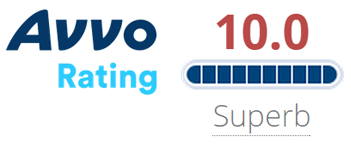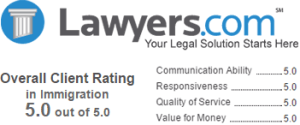Outlook for Employment-Based Green Cards in 2023-2024
 The scenario for employment-based green cards starting on October 1, 2023 looks good in the short term, but is terrible for the United States in the long run.
The scenario for employment-based green cards starting on October 1, 2023 looks good in the short term, but is terrible for the United States in the long run.
Our country will fall behind in the race for global talent unless our government reforms our outdated legal immigration system.
According to the U.S. State Department’s October 2023 Visa Bulletin:
- EB-1 Priority Workers – For India, the Final Action Date will advance by 5 years to January 1, 2017 and by 2 weeks for China to February 15, 2022. The EB-1 category for all other countries will become current.
- EB-2 Advanced Degreed Professionals – For India, the Final Action Date will advance by 1 year to January 1, 2012 and by nearly 3 months for China to October 1, 2019. EB-2 will advance for the rest of the world by 1 week to July 8, 2022.
- EB-3 Professionals and Skilled Workers – The priority date for India will move ahead by 3+ years to May 1, 2012 and by 4 months for China to January 1, 2020. For all other countries, EB-3 will move forward by 19 months to December 1, 2021.
- EB-5 Investors: Unreserved Categories – For India, the priority date will zoom forward by 20 months to December 15, 2018 and by 3 weeks to China to October 1, 2015. For persons born in other countries, EB-5 will remain current.
So, given the good news in the October Visa Bulletin, why should we be less than optimistic about the waiting times for employment-based green cards in the coming months and years?
Client Reviews

Great Work!
“We are very pleased by the services we get from the Law Offices of Carl Shusterman. Our experience in the past year with all our H1B renewals has been amazing, and we’ve obtained great results.”
- KRG Technologies
Read More Reviews
Zoom Consultations Available!
Outlook for Fiscal Year 2024
Under our immigration laws, employment-based green cards are limited to 140,000 per fiscal year (FY) plus any unused numbers in the family-based green card categories in the prior year.
COVID had a chilling affect on family-based green cards since most U.S. Embassies and Consulates operated at highly reduced rates during FY2021 and FY2022. Most family-based applicants get their green cards abroad while most employment-based applicants adjust their status in the U.S.
The Department of State (DOS) determined that the FY 2022 annual limit on employment-based green cards was 281,507 – more than double the usual amount. This was due to unused family-based visa numbers from FY 2021 being allocated to the next fiscal year’s available employment-based green cards.
Again, in the past fiscal year, the approximately 57,000 unused family-sponsored visa numbers from FY 2022 were added to the FY 2023 employment-based limit for a total of 197,000 EB green cards.
In the coming fiscal year which begins on October 1, 2023, USCIS estimates that the number of employment-based green cards will be reduced to 165,000. And I would not be surprised if the number sinks back to 140,000 next year.
Employment-Based Green Cards – What is the Problem?
How many people are waiting in line for employment-based green cards?
The number which includes employees with approved EB petitions and their spouses and children is approximately 1.8 million and is growing at a rapid pace. Divide 1.8 million by 140,000 and it would seem that the waiting time to get an employment-based green card would be over 12 years.
However, the situation is far worse than that. Consider that 1.1 million of the 1.8 million persons waiting in line for an employment-based green card are from India. Most of the them are employed by companies in the U.S. on H-1B temporary professional work visas. The H-1B category, like most temporary visa categories, is based on one’s education and experience. A person’s country of birth is irrelevant.
However, each green card category comes with a requirement stating that no more than 7% of people receiving green cards can be born in a particular country.
This makes no sense since employment-based green cards should be based on merit, not one’s birthplace.
And consider this. Ireland has a population of 5 million while India’s population exceeds 1.4 billion. And yet, the number of immigrants in each employment category has the same limit. Nonsense!
The net effect is that new immigrants from India will not live long enough to receive green cards although their counterparts from most other countries can get green cards in 2-3 years.
Yes, they can keep renewing their H-1B temporary working visas every 3 years, but when their children reach the age of 21, most of them will be required to leave both the United States and their families behind.
And the problem is not just for immigrants from India.
Remember, there are another 700,000 other persons waiting in line for employment-based green cards. Some of these are physicians and nurses working in medically-underserved areas of the U.S. Others are entrepreneurs, scientists, researchers, professors and IT workers, all contributing to the U.S. economy, paying taxes and following our immigration laws.
Our outdated immigration laws encourage talented professionals to immigrate to other countries rather than the U.S.
Congress must take the lead and fix our broken legal immigration system.





